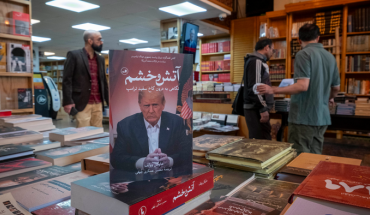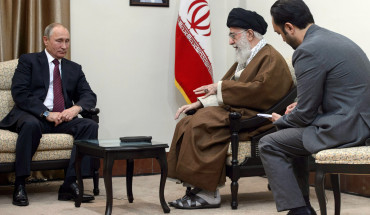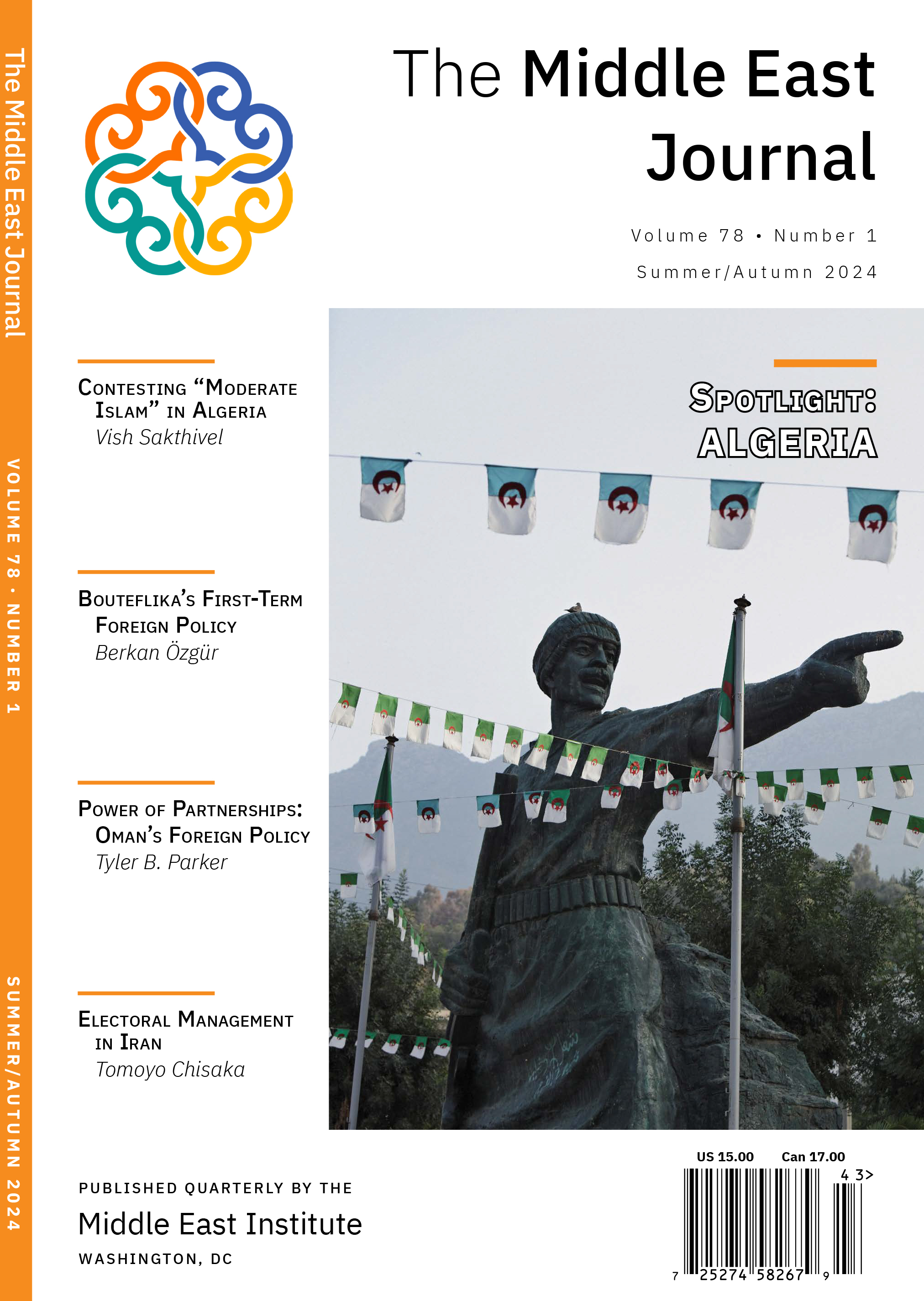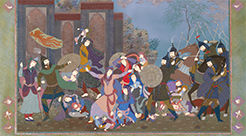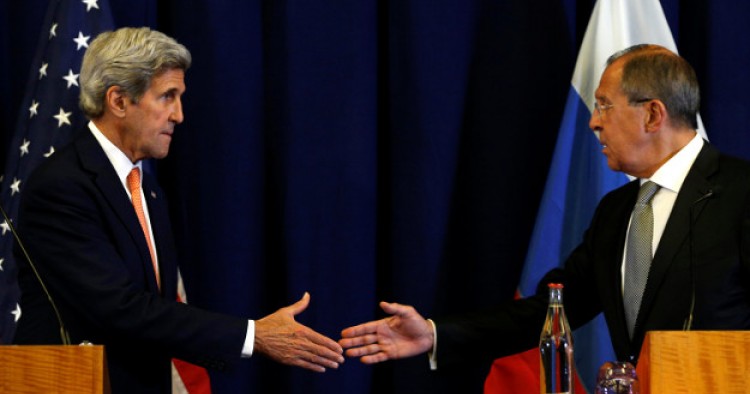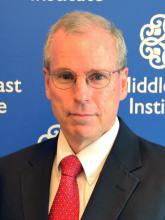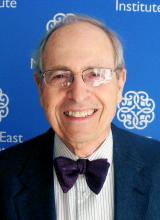[Oops!: If our weekly e-mail sent you here by mistake, please click here for the Sept. 19 Monday Briefing.]
In this week's Monday Briefing, MEI experts Robert S. Ford, Charles Lister, and Marvin G. Weinbaum provide analysis events including the announced cessation of hostilities in Syria, the Syrian rebels' resonse to the deal, and the Afghan president's upcoming visit to India.
Cessation of Hostilities Deal in Syria Reached … Now What?
Robert S. Ford, Senior Fellow
Even if the cessation of hostilities deal holds, there is no clear path forward from a cease-fire to a political solution to resolve the five-and-a-half-year-old war.
The guns in Syria—or at least most of them—are to fall silent midday today Washington time. The assessment of the cessation of hostilities deals’ implementation will focus on whether:
- Syrian and Russian artillery and airstrikes stop in areas where the non-extremist armed opposition is in control
- Syrian government and non-extremist ground forces halt attacks
- Syrian government forces withdraw from Castello Road in Aleppo, and a small, lightly armed observation force from the United Nations can setup along the road
- the U.N. gets the green light for humanitarian aid convoys to move into the many besieged areas throughout western Syria
The United States and Russia have, reportedly, detailed maps of where the Islamic State and al-Qaeda’s affiliate, Jabhat Fatah al-Sham (formerly Jabhat al-Nusra), are located in western Syria. The Syrian government will continue attacking them as permitted by the Russian-American deal. If bombs also fall on more moderate groups, however, accusations and counter-accusations will begin flying on Tuesday.
There is no agreed enforcement mechanism. American leverage with Russia, and hence the Syrian government, is the promise to establish a joint military operation with Russia against the al-Qaeda affiliate and the Islamic State—in other words, not much. Looking farther out, even if the cessation of hostilities deal holds, there is no clear path forward from a cease-fire to a political solution to resolve the five-and-a-half-year-old war. Instead, Syria at best is headed toward a messy partition marked by contentious internal dividing lines and with little chance of reconstruction starting.
Syrian Rebels Doubt Cease-Fire will Hold
Charles Lister, Senior Fellow
Leading representatives of all of Syria's key armed opposition factions met late into the night yesterday in Turkey to discuss what is being requested of them by the U.S.-Russia deal. There can be little doubting that sentiment on the ground in opposition-held areas of Syria perceives the impending truce and its various secondary consequences with great skepticism. While the prospects of humanitarian aid deliveries is naturally welcomed, particular concern surrounds the apparent lack of enforcement mechanisms for the cease-fire and no public mention of punitive measures for violations.
While opposition factions still refuse to "de-couple" from Jabhat Fateh al-Sham, armed groups are purportedly resigned to the inevitability of U.S. and Russian strikes on their military ally. One source in the meeting claimed the groups present had issued a request to Turkey that its intelligence service seek to play a role in assessing potential Jabhat Fateh al-Sham targets alongside the United States, though the prospects of such an arrangement seem slim.
Ultimately, it seems likely that Syria's opposition will abide by the agreement's terms. For reputational reasons, they have little choice. However, faith in a sustained cease-fire is low and although politics may have assumed public primacy for now, there are also preparations being made behind the scenes to mobilize and prepare for a new round of fighting.
That President Bashar al-Assad chose to mark Eid in the recently surrendered town of Daraya this morning—a highly provocative act—and then issued a speech stating his determination to recapture all of Syria, illustrates clearly how this cease-fire deal may struggle before it's even started.
Afghan President’s India Visit will Rattle Pakistan
Marvin G. Weinbaum, Director of the Center for Pakistan Studies
As Afghanistan’s relations with Pakistan have chilled, its ties with India have deepened. There was a time not long ago that the government of Ashraf Ghani, aware of Pakistan’s sensitivity about India’s activities in Afghanistan, was hesitant in accepting India’s security sector assistance. But with little prospect for Pakistan-assisted peace negotiations with the Taliban, and Pakistan seen as unwilling to end the sheltering of Afghan insurgents, Kabul is ready for closer defense cooperation with India.
This week’s scheduled meeting in New Delhi between President Ghani and Indian Prime Minister Nardendra Modi highlights the change. Kabul is anxious to arrange the transfer of military equipment beyond completion of the delivery of four Russian-built attack helicopters, to include artillery and ammunition. India has already provided around $2 billion in development and other non-military aid to the country. Modi’s hardline government is now expected to agree to an expansion of India’s role in shoring up the currently hard-pressed Afghan forces. Wider assistance carries the endorsement of Washington, which is pleased to have countries in the region share the burden of training and equipping the Afghan military. Still, with Pakistan in mind, Ghani will refrain from asking for the deployment of Indian troops.
India may perceive strategic advantage in strengthening its links to Pakistan’s northwest neighbor. But its prime motivation in helping Afghanistan to stave off defeat is fear of a radical Islamic regime assuming power and spreading its doctrines and jihadi insurgency across region, eventually reaching India with its almost 180 million Muslims.
The Middle East Institute (MEI) is an independent, non-partisan, non-for-profit, educational organization. It does not engage in advocacy and its scholars’ opinions are their own. MEI welcomes financial donations, but retains sole editorial control over its work and its publications reflect only the authors’ views. For a listing of MEI donors, please click here.






